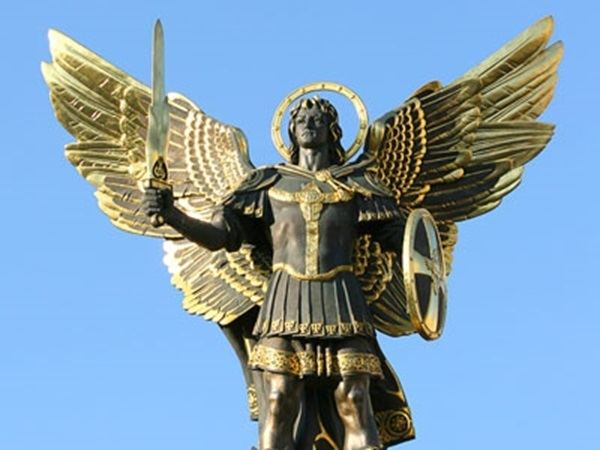 | ||
Canonized Pre-congregational saint Feast November 8 (New Calendar Eastern Orthodox Churches) / November 21 (Old Calendar Eastern Orthodox Churches), September 29 ("Michaelmas"); May 8 (Tridentine Calendar) / 12th of each month in Coptic calendar (Coptic Churches) ; many other local and historical feasts Patronage Guardian of the Catholic Church; Guardian of Vatican City; protector of the Jewish people, Germany, France, Ukraine, Brussels, Kiev, Arkhangelsk, Argao, Cebu, Philippines, police officers, military, grocers, mariners, paratroopers, firefighters, paramedics, sickness Movies Wandering, Wansapanataym, The Lost Shepherd Played by Jericho Rosales, Kami Libaridyan Similar Gabriel, Guardian angel, Castiel, Beelzebub, The Beast | ||
Michael ([mixaˈʔel]; Hebrew: מִיכָאֵל, Micha'el or Mîkhā'ēl, 'Who is like God?'; Greek: Μιχαήλ, Mikhaḗl; Latin: Michael or Michahel; Arabic: ميخائيل, Mīkhā'īl) is an archangel in Judaism, Christianity, and Islam. In Roman Catholic, Eastern Orthodox, Anglican, and Lutheran traditions, he is called "Saint Michael the Archangel" and "Saint Michael". In the Oriental Orthodox and Eastern Orthodox traditions, he is called "Taxiarch Archangel Michael" or simply "Archangel Michael".
Contents
- Judaism
- Midrash
- Early Christian views and devotions
- Catholicism
- Eastern and Oriental Orthodoxy
- Protestant views
- Jehovahs Witnesses
- Seventh day Adventists
- The Church of Jesus Christ of Latter day Saints
- Esoteric traditions
- Islam
- Feasts
- Patronages and orders
- Christianity
- In literature
- Artistic depictions
- Major shrines
- References
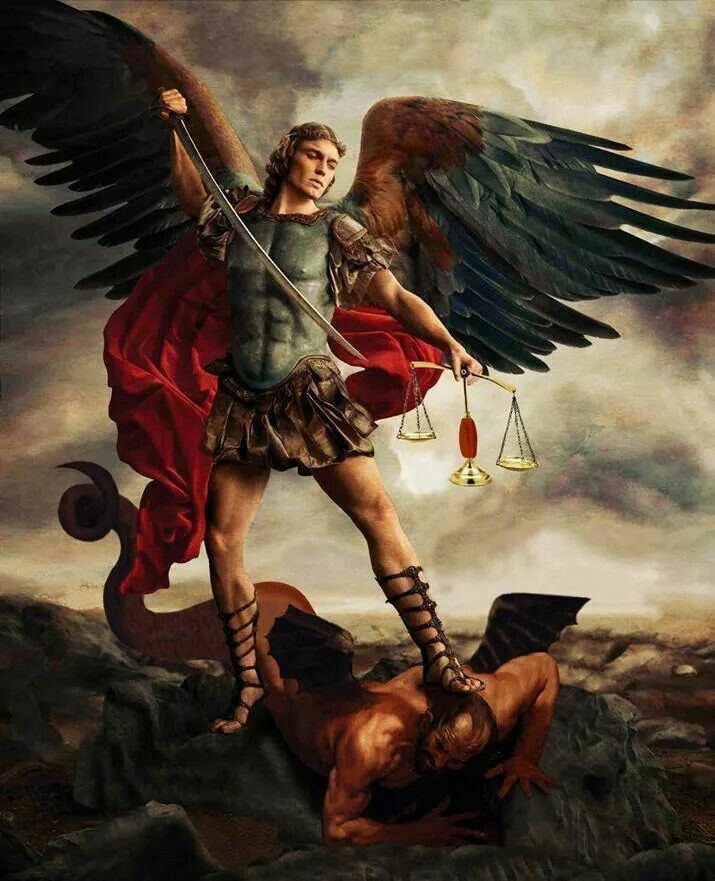
Michael is mentioned three times in the Book of Daniel, once as a "great prince who stands up for the children of your people". The idea that Michael was the advocate of the Jews became so prevalent that, in spite of the rabbinical prohibition against appealing to angels as intermediaries between God and his people, Michael came to occupy a certain place in the Jewish liturgy.
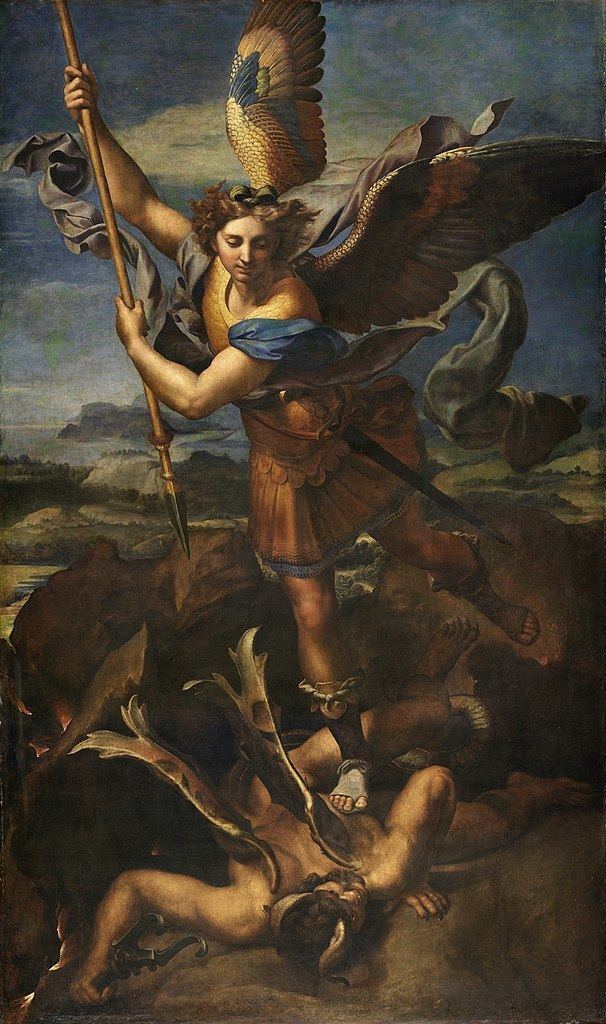
In the New Testament Michael leads God's armies against Satan's forces in the Book of Revelation, where during the war in heaven he defeats Satan. In the Epistle of Jude Michael is specifically referred to as "the archangel Michael". Christian sanctuaries to Michael appeared in the 4th century, when he was first seen as a healing angel, and then over time as a protector and the leader of the army of God against the forces of evil. By the 6th century, devotions to Archangel Michael were widespread both in the Eastern and Western Churches. Over time, teachings on Michael began to vary among Christian denominations.
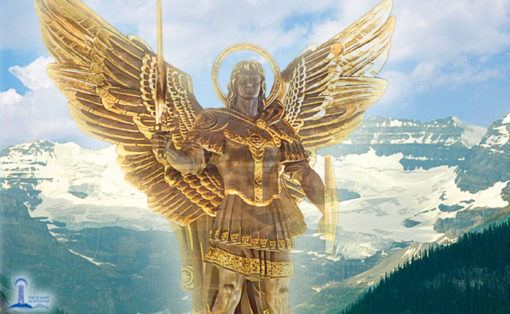
Judaism

According to rabbinic Jewish tradition, Michael acted as the advocate of Israel, and sometimes had to fight with the princes of the other nations (cf. Daniel 10:13) and particularly with the angel Samael, Israel's accuser. Michael's enmity with Samael dates from the time when the latter was thrown down from heaven. Samael took hold of the wings of Michael, whom he wished to bring down with him in his fall; but Michael was saved by God. Michael is also said to have had a dispute with Samael over the soul of Moses.
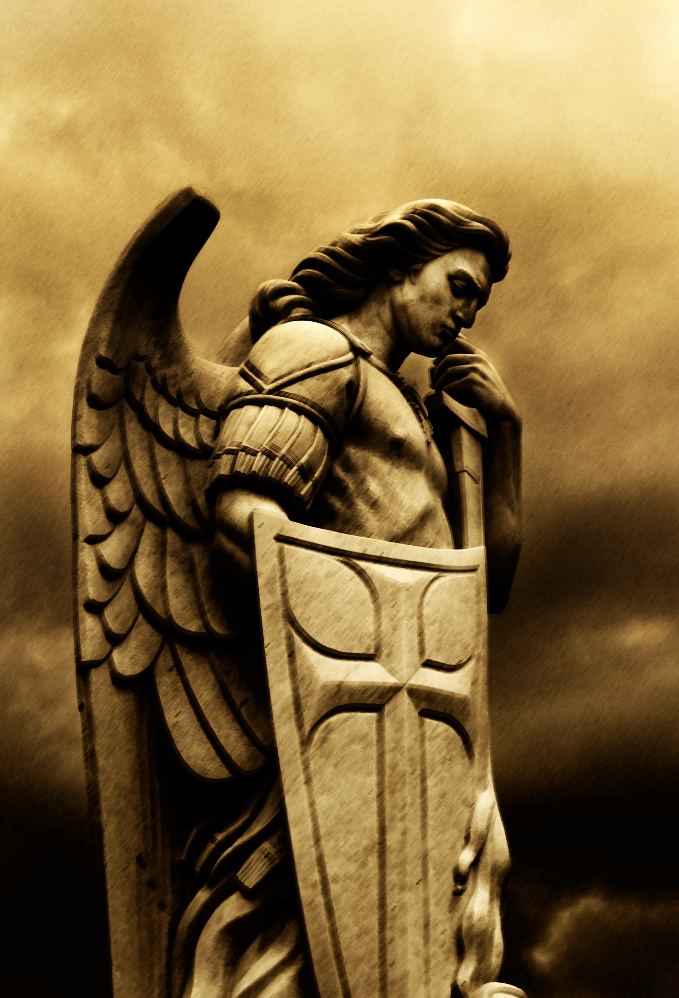
The idea that Michael was the advocate of the Jews became so prevalent that in spite of the rabbinical prohibition against appealing to angels as intermediaries between God and his people, Michael came to occupy a certain place in the Jewish liturgy: "When a man is in need he must pray directly to God, and neither to Michael nor to Gabriel."There were two prayers written beseeching him as the prince of mercy to intercede in favor of Israel: one composed by Eliezer ha-Kalir, and the other by Judah ben Samuel he-Hasid. But appeal to Michael seems to have been more common in ancient times. Thus Jeremiah is said to have addressed a prayer to him.
Midrash
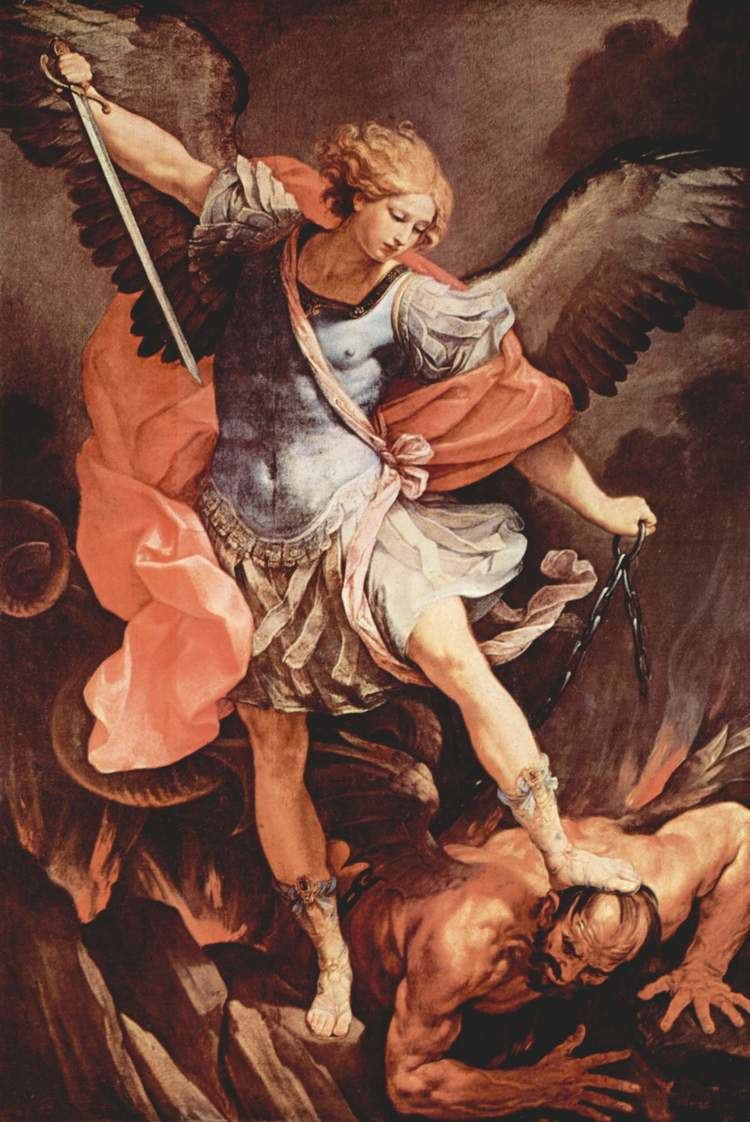
The rabbis declare that Michael entered upon his role of defender at the time of the biblical patriarchs. Thus, according to Rabbi Eliezer ben Jacob, it was Michael who rescued Abraham from the furnace into which he had been thrown by Nimrod (Midrash Genesis Rabbah xliv. 16). It was Michael, the "one that had escaped" (Genesis 14:13), who told Abraham that Lot had been taken captive (Midrash Pirke R. El.), and who protected Sarah from being defiled by Abimelech. He announced to Sarah that she would bear a son and he rescued Lot at the destruction of Sodom.
It is said that Michael prevented Isaac from being sacrificed by his father by substituting a ram in his place, and saved Jacob, while yet in his mother's womb, from being killed by Samael. Later Michael prevented Laban from harming Jacob.(Pirke De-Rabbi Eliezer, xxxvi). It was Michael who wrestled with Jacob and who afterward blessed him.
The midrash Exodus Rabbah holds that Michael exercised his function of advocate of Israel at the time of the Exodus also, when Satan (as an adversary) accused the Israelites of idolatry and declared that they were consequently deserving of death by drowning in the Red Sea. Michael is also said to have destroyed the army of Sennacherib.
Early Christian views and devotions
The early Christians regarded some of the martyrs, such as Saint George and Saint Theodore, as military patrons; but to St Michael they gave the care of their sick, and he was first venerated as a healer in Phrygia (modern-day Turkey).
The earliest and most famous sanctuary to Saint Michael in the ancient Near East was also associated with healing waters. It was the Michaelion built in the early 4th century by Emperor Constantine at Chalcedon, on the site of an earlier Temple called Sosthenion.
A painting of the Archangel slaying a serpent became a major art piece at the Michaelion after Constantine defeated Licinius near there in 324, eventually leading to the standard iconography of Archangel Michael as a warrior saint slaying a dragon. The Michaelion was a magnificent church and in time became a model for hundreds of other churches in Eastern Christianity which spread devotions to the Archangel.
In the 4th century, Saint Basil the Great's homily (De Angelis) placed Saint Michael over all the angels. He was called "Archangel" because he is the prince of the other angels, the title Αρχαγγέλος (archangelos) being used of him in Jude 1:9. Into the 6th century, the view of Michael as a healer continued in Rome; where after a plague, the sick slept at night in the church of Castel Sant'Angelo (dedicated to him for saving Rome), waiting for his manifestation.
In the 6th century the growth of devotions to the saint in the Western Church was manifested by the feasts dedicated to him, as recorded in the Leonine Sacramentary. The 7th century Gelasian Sacramentary included the feast "S. Michaelis Archangeli", as did the 8th century Gregorian Sacramentary. Some of these documents refer to a no longer extant Basilica Archangeli on via Salaria in Rome.
The angelology of Pseudo-Dionysius which was widely read as of the 6th century gave Michael a rank in the celestial hierarchy. Later, in the 13th century, others such as Bonaventure believed that he is the prince of the Seraphim, the first of the nine angelic orders. According to Saint Thomas Aquinas (Summa Ia. 113.3), he is the Prince of the last and lowest choir, the Angels.
Catholicism
Catholics often refer to Michael as "Holy Michael, the Archangel" or "Saint Michael", a title that does not indicate canonisation. He is generally referred to in Christian litanies as "Saint Michael", as in the Litany of the Saints. In the shortened version of this litany used in the Easter Vigil, he alone of the angels and archangels is mentioned by name, omitting Saint Gabriel and Saint Raphael.
In the Roman Catholic teachings Saint Michael has four main roles or offices. His first role is the leader of the Army of God and the leader of heaven's forces in their triumph over the powers of hell. He is viewed as the angelic model for the virtues of the spiritual warrior, with the conflict against evil at times viewed as the battle within.
The second and third roles of Michael in Catholic teachings deal with death. In his second role, Michael is the angel of death, carrying the souls of all the deceased to heaven. In this role Michael descends at the hour of death, and gives each soul the chance to redeem itself before passing; thus consternating the devil and his minions. Catholic prayers often refer to this role of Michael. In his third role, he weighs souls in his perfectly balanced scales. For this reason, Michael is often depicted holding scales.
In his fourth role, St Michael, the special patron of the Chosen People in the Old Testament, is also the guardian of the Church; it was thus not unusual for the angel to be revered by the military orders of knights during the Middle Ages. Thus, the nomenclature of villages around the Bay of Biscay reflects that history. This role also extends to his being the patron saint of a number of cities and countries.
Roman Catholicism includes traditions such as the Prayer to Saint Michael which specifically asks for the faithful to be "defended" by the saint. The Chaplet of Saint Michael consists of nine salutations, one for each choir of angels.
Eastern and Oriental Orthodoxy
The Eastern Orthodox accord Michael the title "Archistrategos", or "Supreme Commander of the Heavenly Hosts." The Eastern Orthodox pray to their guardian angels and above all to Michael and Gabriel.
The Eastern Orthodox have always had strong devotions to angels, and the trend continues to date with the term "Bodiless Powers" applied to them. A number of feasts dedicated to Archangel Michael are celebrated by the Eastern Orthodox throughout the year.
Archangel Michael is mentioned in a number of Eastern Orthodox hymns and prayer, and his icons are widely used within Eastern Orthodox churches. In many Eastern Orthodox icons, Christ is accompanied by a number of angels, Michael being a predominant figure among them.
In Russia many monasteries, cathedrals, court and merchant churches are dedicated to the Chief Commander Michael, and most Russian cities have a church or chapel dedicated to the Archangel Michael.
The place of Michael in the Coptic Orthodox Church of Alexandria is as a saintly intercessor, where he is seen as the one: who presents to God the prayers of the just, who accompanies the souls of the dead to heaven, who defeats the devil. He is celebrated liturgically on the 12th of each month. In Alexandria, a church was dedicated to him in the early fourth century on the 12th of the month of Ba'unah. On the 12th of the month of Hathor is the celebration of Michael's appointment in heaven, where Michael became the chief of the angels.
Protestant views
Many Protestant Christians do not call upon the intercession of saints. However, an unofficial Anglican prayer of preparation before Mass includes a confession to "Michael the Archangel" as well as other saints such as John the Baptist.
Protestant denominations generally recognize only two archangels, Michael and Gabriel, usually emphasizing Michael, unlike Judaism, Roman Catholicism, and Eastern Orthodoxy which may at times recognize seven (and in rare cases eight) archangels, with Michael, Gabriel, and Raphael generally regarded with an elevated status, e.g. being the only archangels honored by name in Catholicism.
Citing Hengstenberg, John A. Lees, in International Standard Bible Encyclopedia, states: "The earlier Protestant scholars usually identified Michael with the pre-incarnate Christ, finding support for their view, not only in the juxtaposition of the 'child' and the archangel in Rev 12:1-17, but also in the attributes ascribed to him in Daniel." Charles Haddon Spurgeon stated that Jesus is Michael “the only Archangel”, and that he is God the Son, and co-equal to the Father. In Spurgeon’s view, "archangel" means "head of the angels" rather than "head angel," and is a title similar to "Prince or Leader of the host." (Daniel 8:11)
Within Anglicanism, Bishop Robert Clayton proposed that Michael was the Logos and Gabriel the Holy Spirit. Controversy over Clayton's views led the government to order his prosecution, but he died before his scheduled examination.
Michael continues to be recognized among Protestants by key churches dedicated to him, e.g., St. Michaelis Church, Hamburg and St. Michael's Church, Hildesheim, each of which is of the Lutheran Church and has appeared in the Bundesländer series of €2 commemorative coins for 2008 and 2014 respectively.
In Bach's time, the annual feast of Michael and All the Angels on 29 September was regularly celebrated with a festive service, for which Bach composed several cantatas, for example the chorale cantata Herr Gott, dich loben alle wir, BWV 130 in 1724, Es erhub sich ein Streit, BWV 19, in 1726 and Man singet mit Freuden vom Sieg, BWV 149, in 1728 or 1729.
Jehovah's Witnesses
Jehovah's Witnesses believe Michael to be another name for Jesus Christ in heaven, in his pre-human and post-resurrection existence. They say the definite article at Jude 9—referring to "Michael the archangel"—identifies Michael as the only archangel. They consider Michael to be synonymous with Jesus, described at 1 Thessalonians 4:16 as descending "with a cry of command, with the voice of an archangel, and with the sound of the trumpet".
They believe the prominent roles assigned to Michael at Daniel 12:1 and Revelation 12:7, 19:14, 16, are identical to Jesus' roles, being the one chosen to lead God's people and as the only one who "stands up", identifying the two as the same spirit being. Because they identify Michael with Jesus, he is therefore considered the first and greatest of all God's heavenly sons, God's chief messenger, who takes the lead in vindicating God's sovereignty, sanctifying his name, fighting the wicked forces of Satan and protecting God's covenant people on earth. Jehovah's Witnesses also identify Michael with the "Angel of the Lord" who led and protected the Israelites in the wilderness.
Seventh-day Adventists
Seventh-day Adventists believe that Michael is another name for the Heavenly Christ, and another name for the Word-of-God (as in John 1) before he became incarnate as Jesus. "Archangel" (meaning "Chief of the Angels") was the leadership position held by the Word-of-God as Michael while among the angels. According to Adventist theology, Michael was considered the "eternal Word", and not a created being or created angel, and the one by whom all things were created. The Word was then born incarnate as Jesus.
Seventh-day Adventists believe the name "Michael" is significant in showing who it is, just as "Immanuel" (which means "God with us") is about who Jesus is. They believe that name "Michael" signifies "one who is God" and that as the "Archangel" or "chief or head of the angels" he led the angels and thus the statement in Revelation 12:7-9 identifies Jesus as Michael.
Seventh-day Adventists believe that "Michael" is but one of the many titles applied to the Son of God, the second person of the Godhead. According to Adventists, such a view does not in any way conflict with the belief in his full deity and eternal preexistence, nor does it in the least disparage his person and work. In support of the Seventh-day Adventist belief Michael is also the commander of God's army which helped Joshua son of Nun to lead Israel in to conquering Jericho [Joshua 5:14 - "And he said, Nay; but as captain of the host of the LORD am I now come. And Joshua fell on his face to the earth, and did worship, and said unto him, What saith my Lord unto his servant?"]
In the Seventh-day Adventist view, the statement in some translations of 1 Thessalonians 4:13-18: "For the Lord himself shall descend from heaven, with a shout, with the voice of the archangel, and with the trump of God" identifies Jesus as Archangel, which is Michael. (Other translations have "For the Lord himself will descend from heaven with a cry of command, with the voice of an archangel, and with the sound of the trumpet of God.") And the Seventh-day Adventists believe that John 5:25-29 also confirms that Jesus and Michael are the same.
Seventh-day Adventists believe there is and can only be one archangel and that one Archangel is named Michael and yet in Scripture is shown as doing what also applies to Christ even from the beginning, so is Christ preincarnate. There was a perception that Adventists were relegating Jesus to something less than divine or less than God but that is not valid since Seventh-day Adventist theology is expressly Trinitarian.
The Church of Jesus Christ of Latter-day Saints
Latter-day Saints (also known informally as Mormons) believe that Michael is Adam, the Ancient of Days (Dan. 7), a prince, and the patriarch of the human family. Also, they hold that Michael assisted Jehovah (the heavenly form of Jesus Christ) in the creation of the world under the direction of God the Father and cast Satan out of heaven.
Esoteric traditions
The French occultist, Eliphas Levi, the German philosopher Franz von Baader, and the Theosophist Louis Claude de St. Martin spoke of 1879 as the year in which Michael overcame the dragon. In 1917, Rudolf Steiner, the founder of anthroposophy, similarly stated, "in 1879, in November, a momentous event took place, a battle of the Powers of Darkness against the Powers of Light, ending in the image of Michael overcoming the Dragon".
Islam
The Qur'an mentions Michael together with Gabriel in the sura Al-Baqara:
Whoever is an enemy to Allah and His angels and messengers, to Gabriel and Michael,- Lo! Allah is an enemy to those who reject Faith.
In Sunni Islam, Michael will be sent to bring a handful of earth; but the Earth will not yield a piece of itself, some of which will burn. This is articulated by Al-Tha'labi whose narrative states that God will tell Earth that some will obey him and others not.
The Ahmadiyya movement believes in Michael along with other angels such as Gabriel. They are called Mala'ikah and are described as spiritual beings who obey Allah's command.
Feasts
In the General Roman Calendar, the Anglican Calendar of Saints, and the Lutheran Calendar of Saints, the archangel's feast is celebrated on Michaelmas Day, September 29. The day is also considered the feast of Saints Michael, Gabriel, and Raphael, in the General Roman Calendar and the Feast of Saint Michael and All Angels according to the Church of England.
In the Eastern Orthodox Church, Saint Michael's principal feast day is November 8 (those that use the Julian calendar celebrate it on what in the Gregorian calendar is now November 21), honoring him along with the rest of the "Bodiless Powers of Heaven" (i.e. angels) as their Supreme Commander, and the Miracle at Chonae is commemorated on September 6.
In the calendar of the Church of England diocese of Truro, May 8 is the feast of St. Michael, Protector of Cornwall. The archangel St. Michael is one of the three patron saints of Cornwall.
Patronages and orders
In late medieval Christianity, Michael, together with Saint George, became the patron saint of chivalry and is now also considered the patron saint of police officers, paramedics, firefighters and the military.
Since the victorious Battle of Lechfeld against the Hungarians in 955, Michael was the patron saint of the Holy Roman Empire and still is the patron saint of modern Germany and other German speaking regions formerly covered by the realm.
In mid to late 15th century, France was one of only four courts in Western Christendom without an order of knighthood. Later in the 15th century, Jean Molinet glorified the primordial feat of arms of the archangel as "the first deed of knighthood and chivalrous prowess that was ever achieved." Thus Michael was the natural patron of the first chivalric order of France, the Order of Saint Michael of 1469. In the British honours system, a chivalric order founded in 1818 is also named for these two saints, the Order of St Michael and St George. The Order of Michael the Brave is Romania's highest military decoration.
Apart from his being a patron of warriors, the sick and the suffering also consider Archangel Michael their patron saint. Based on the legend of his 8th century apparition at Mont-Saint-Michel, France, the Archangel is the patron of mariners in this famous sanctuary. After the evangelisation of Germany, where mountains were often dedicated to pagan gods, Christians placed many mountains under the patronage of the Archangel, and numerous mountain chapels of St. Michael appeared all over Germany.
Similarly, the Sanctuary of St. Michel (San Migel Aralarkoa), the oldest Christian building in Navarre (Spain), lies at the top of a hill on the Aralar Range, and harbours Carolingian remains. St. Michel is an ancient devotion of Navarre and eastern Gipuzkoa, revered by the Basques, shrouded in legend, and held as a champion against paganism and heresy. It came to symbolize the defense of Catholicism, as well as Basque tradition and values during the early 20th century.
He has been the patron saint of Brussels since the Middle Ages. The city of Arkhangelsk in Russia is named for the Archangel. Ukraine and its capital Kiev also consider Michael their patron saint and protector.
An Anglican sisterhood dedicated to Saint Michael under the title of the Community of St Michael and All Angels was founded in 1851. The Congregation of Saint Michael the Archangel (CSMA), also known as the Michaelite Fathers, is a religious order of the Roman Catholic Church founded in 1897. The Canons Regular of the Order of St Michael the Archangel (OSM) are an Order of professed religious within the Anglican Church in North America, the North American component of the Anglican realignment movement.
Judaism
There is a legend which seems to be of Jewish origin, and which was adopted by the Copts, to the effect that Michael was first sent by God to bring Nebuchadnezzar (c. 600 BC) against Jerusalem, and that Michael was afterward very active in freeing his nation from Babylonian captivity. According to midrash Genesis Rabbah, Michael saved Hananiah and his companions from the Fiery furnace. Michael was active in the time of Esther: "The more Haman accused Israel on earth, the more Michael defended Israel in heaven". It was Michael who reminded Ahasuerus that he was Mordecai's debtor; and there is a legend that Michael appeared to the high priest Hyrcanus, promising him assistance.
Christianity
The Orthodox Church celebrates the Miracle at Chonae on September 6. The pious legend surrounding the event states that Saint John the Apostle, when preaching nearby, foretold the appearance of Michael at Cheretopa near Lake Salda, where a healing spring appeared soon after the Apostle left; in gratitude for the healing of his daughter, one pilgrim built a church on the site. Local pagans, who are described as jealous of the healing power of the spring and the church, attempt to drown the church by redirecting the river, but the Archangel, "in the likeness of a column of fire", split the bedrock to open up a new bed for the stream, directing the flow away from the church. The legend is supposed to have predated the actual events, but the 5th–7th century texts that refer to the miracle at Chonae formed the basis of specific paradigms for "properly approaching" angelic intermediaries for more effective prayers within the Christian culture.
There is a late 5th century legend in Cornwall, UK that the Archangel appeared to fishermen on St Michael's Mount. According to author Richard Freeman Johnson this legend is likely a nationalistic twist to a myth. Cornish legends also hold that the mount itself was constructed by giants and that King Arthur battled a giant there.
The legend of the apparition of the Archangel at around 490 AD at a secluded hilltop cave on Monte Gargano in Italy gained a following among the Lombards in the immediate period thereafter, and by the 8th century pilgrims arrived from as far away as England. The Tridentine Calendar included a feast of the apparition on 8 May, the date of the 663 victory over the Greek Neapolitans that the Lombards of Manfredonia attributed to Saint Michael. The feast remained in the Roman liturgical calendar until removed in the revision of Pope John XXIII. The Sanctuary of Monte Sant'Angelo at Gargano is a major Catholic pilgrimage site.
According to Roman legends, Archangel Michael appeared with a sword over the mausoleum of Hadrian while a devastating plague persisted in Rome, in apparent answer to the prayers of Pope St Gregory I the Great (c. 590–604) that the plague should cease. After the plague ended, in honor of the occasion, the pope called the mausoleum "Castel Sant'Angelo" (Castle of the Holy Angel), the name by which it is still known.
According to Norman legend, Michael is said to have appeared to St Aubert, Bishop of Avranches, in 708, giving instruction to build a church on the rocky islet now known as Mont Saint-Michel. In 966 the Duke of Normandy commissioned a Benedictine abbey on the mount, and it remains a major pilgrimage site.
A Portuguese Carmelite nun, Antónia d'Astónaco, reported an apparition and private revelation of the Archangel Michael who had told to this devoted Servant of God, in 1751, that he would like to be honored, and God glorified, by the praying of nine special invocations. These nine invocations correspond to invocations to the nine choirs of angels and origins the famous Chaplet of Saint Michael. This private revelation and prayers were approved by Pope Pius IX in 1851.
From 1961 to 1965, four young schoolgirls had reported several apparitions of Archangel Michael in the small village of Garabandal, Spain. At Garabandal, the apparitions of the Archangel Michael were mainly reported as announcing the arrivals of the Virgin Mary. The Catholic Church has neither approved nor condemned the Garabandal apparitions.
Islam
In Islam, Mikail (Michael) provides nourishments for bodies and souls. Mikail is often depicted as the archangel of mercy who is responsible for the rewards doled out to good persons in this life.
In literature
In the English epic poem Paradise Lost by John Milton, Michael commands the army of angels loyal to God against the rebel forces of Satan. Armed with a sword from God's armory, he bests Satan in personal combat, wounding his side.
Artistic depictions
Most Jewish teachings interpret the Second Commandment as against the use of "graven images" as visual art. Islamic art's focus on calligraphy, rather than painting and sculpture, similarly derives from the association of idolatry with the depiction of human or angelic forms.
In Christian art, Archangel Michael may be depicted alone or with other angels such as Gabriel. Some depictions with Gabriel date back to the 8th century, e.g. the stone casket at Notre Dame de Mortain church in France.
The widely reproduced image of Our Mother of Perpetual Help, an icon of the Cretan school, depicts Michael on the left carrying the lance and sponge of the crucifixion of Jesus, with Gabriel on the right side of Mary and Jesus.
In many depictions Michael is represented as an angelic warrior, fully armed with helmet, sword, and shield. The shield may bears the Latin inscription Quis ut Deus. He may be standing over a serpent, a dragon, or the defeated figure of Satan, whom he sometimes pierces with a lance. The iconography of Michael slaying a serpent goes back to the early 4th century, when Emperor Constantine defeated Licinius at the Battle of Adrianople in 324 AD, not far from the Michaelion a church dedicated to Archangel Michael.
Constantine felt that Licinius was an agent of Satan, and associated him with the serpent described in the Book of Revelation (12:9). After the victory, Constantine commissioned a depiction of himself and his sons slaying Licinius represented as a serpent - a symbolism borrowed from the Christian teachings on the Archangel to whom he attributed the victory. A similar painting, this time with the Archangel Michael himself slaying a serpent then became a major art piece at the Michaelion and eventually lead to the standard iconography of Archangel Michael as a warrior saint.
In other depictions Michael may be holding a pair of scales in which he weighs the souls of the departed and may hold the book of life (as in the Book of Revelation), to show that he takes part in the judgment. However this form of depiction is less common than the slaying of the dragon. Michelangelo depicted this scene on the altar wall of the Sistine Chapel.
In Byzantine art Michael was often shown as a princely court dignitary, rather than a warrior who battled Satan or with scales for weighing souls on the Day of Judgement.
